Reference / Dialog Help / Resource Information
Advanced Leveling Rules
The advanced leveling rules allow you limit the amount of work a resource does in a particular time period, based on the category of task that the resource has been assigned to.
The following table describes the fields on this screen shown below: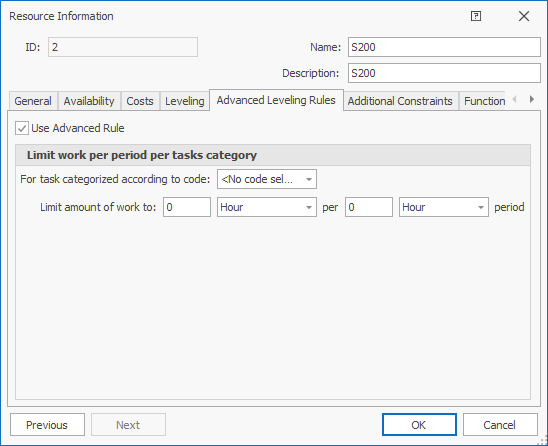
| Field | Description |
|---|---|
| Use Advanced Rule | Select the box to enable this rule |
| For task categorized according to code |
Select a code from the drop-down list according to which tasks is categorised. The work limit per period will apply to all tasks grouped together using this code field. |
| Limit amount of work to |
Enter a number in the first edit field, together with a time unit. This represents the amount of work. Enter a number in the second edit field together with a time unit. This represents the period. Together these entries form the description of the maximum amount of work that can be done in any time period pertaining to tasks grouped by each code value. |
| Previous | Click to display the Resource Information screen of the previous resource that you have defined.
|
| Next | Click to display the Resource Information screen of the next resource that you have defined.
|
| OK | Click to accept all the changes you made and close this screen. |
| Cancel | Click to cancel all the changes you made and close the screen. |

|
Click to display the help available for this screen. |
The use of these rules is best explained by example:
Assume there are 10 tasks as shown in the following figure, grouped by area.
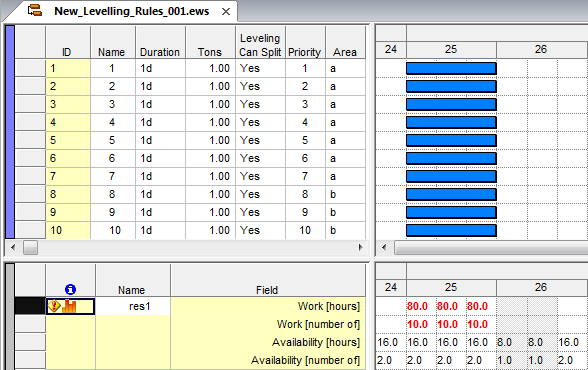
Each task has a single resource assigned (res1), which is set to Driving and working at a rate of 1t/d. The resource has an availability variation as shown in the following image.

After leveling (using algorithm 1, viz. priority leveling) without the advanced leveling rules, the result would be the following.
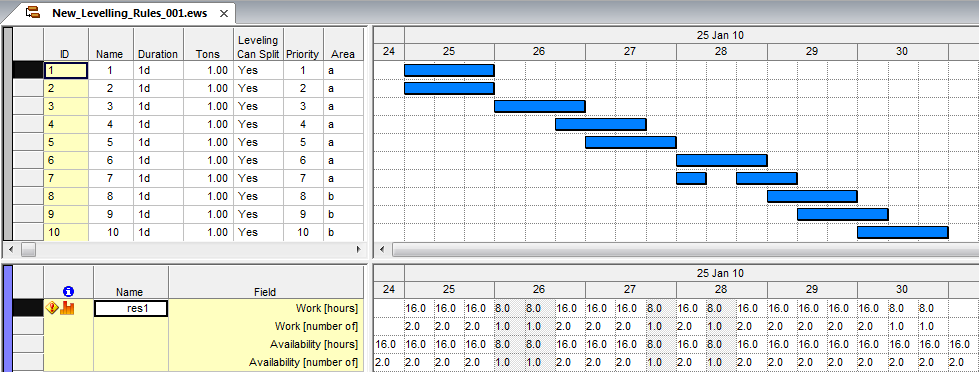
Assume that we wish to limit the amount of work that res1 does in any 1-week period to 128 hours, the rule would be specified as follows.
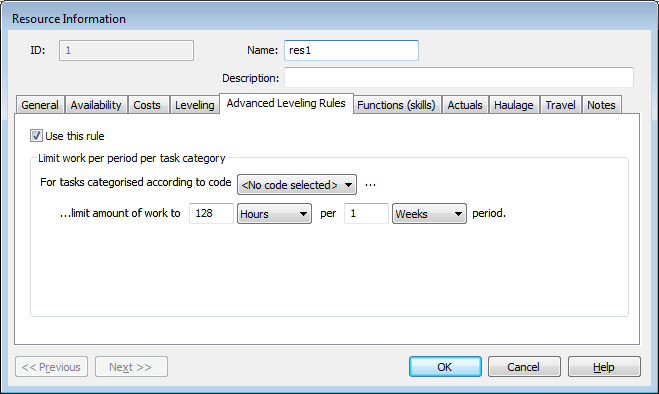
The result of the leveling process would be the following. Note that the work limitation is placed on the resource irrespective of which task the resource works on. Note also that the resource stops working after it has completed 128 hours of work, and then resumes work after a complete week has elapsed since the time it started working.

Now assume that the work limitation is meant to apply per area (i.e. tasks are grouped according to area). The rule would be specified as follows.
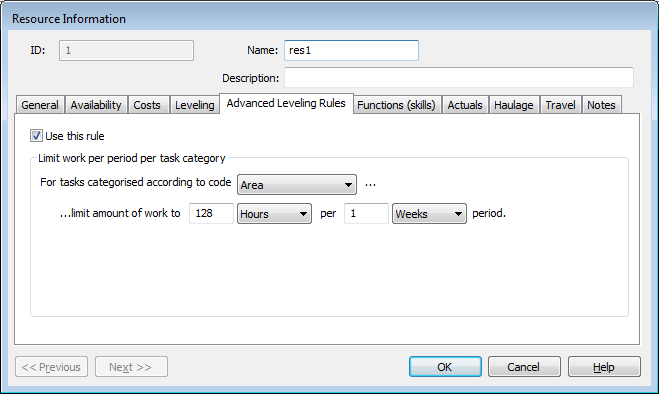
The result of the leveling process would be the following. Note that both area-a and area-b tasks start in the same period, as the work constraint now applies per area.

Related topics and activities

 This button is only active if you have more than one resource defined and you are not
displaying the first resource on your list of resources.
This button is only active if you have more than one resource defined and you are not
displaying the first resource on your list of resources.